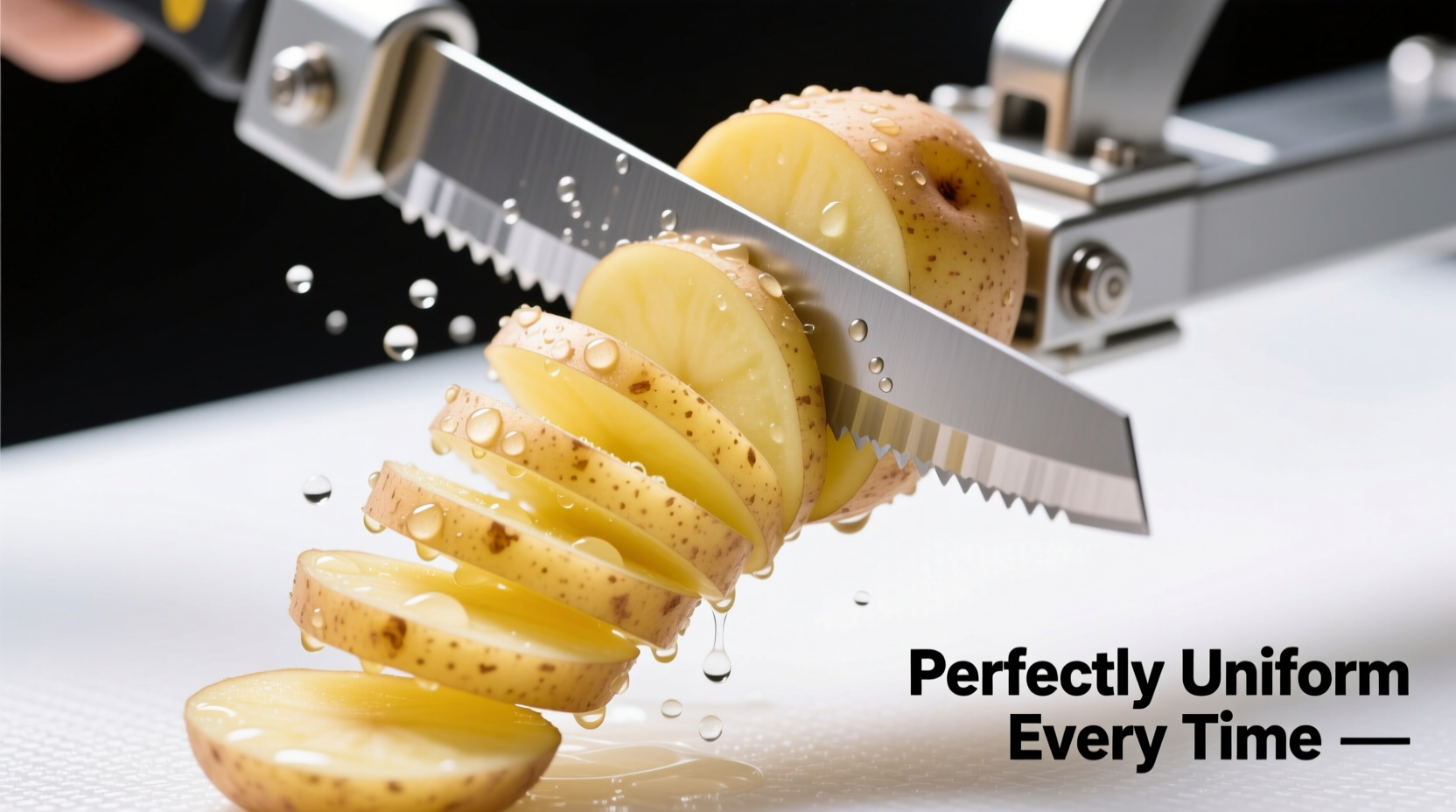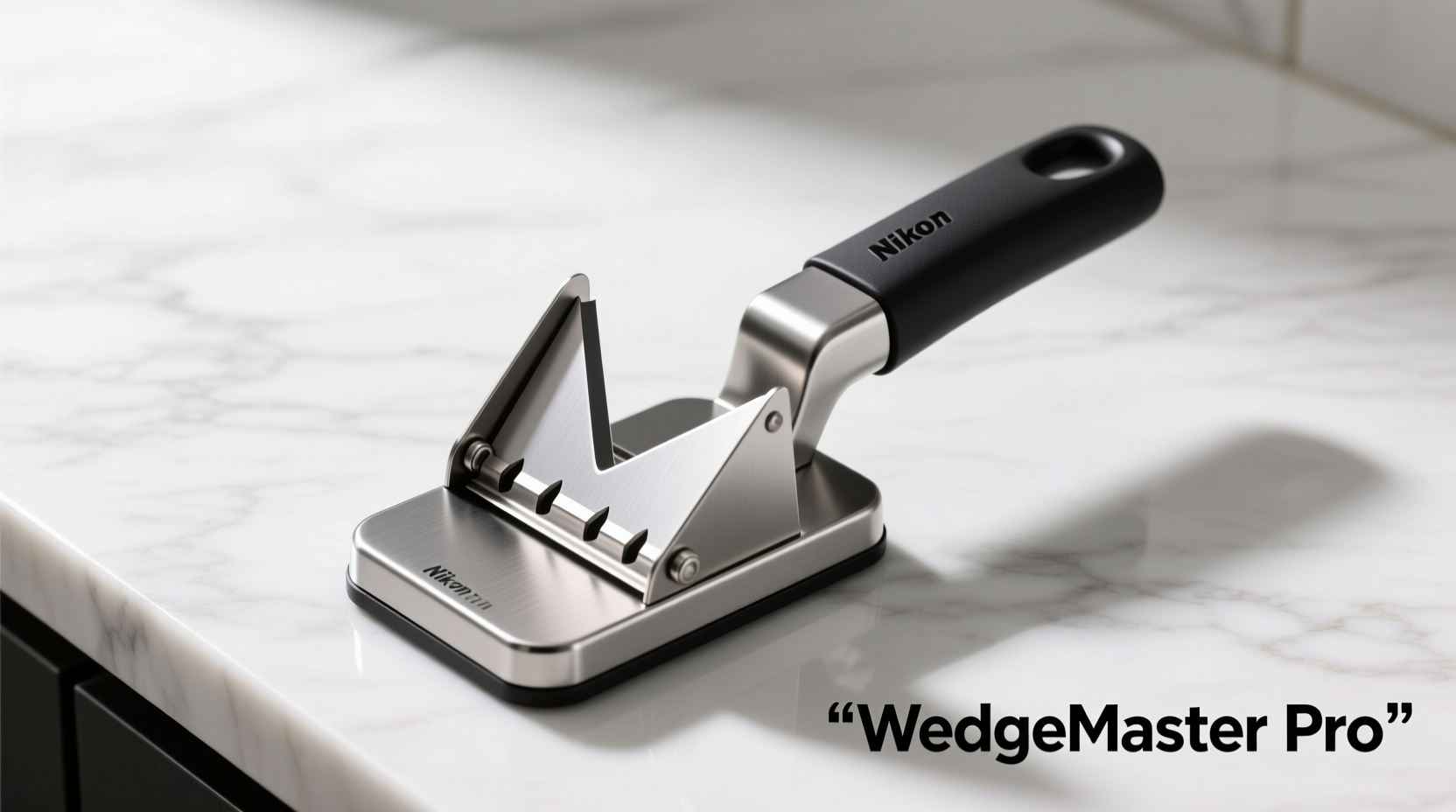When you're preparing potato wedges for roasting, air frying, or baking, achieving uniform size is crucial for consistent cooking results. The potato wedge cutter solves this common kitchen challenge by producing evenly sized wedges every time, making it an essential tool for both home cooks and professional chefs seeking efficiency and safety in potato preparation.
What Exactly Is a Potato Wedge Cutter?
A potato wedge cutter is a handheld kitchen gadget typically made from durable plastic or stainless steel. It features sharp blades arranged in a specific pattern that slices through potatoes with a single press or pull motion. Unlike traditional knife cutting, this tool requires minimal force and skill to operate, making it accessible for cooks of all experience levels.

How Potato Wedge Cutters Work: Three Main Designs
Understanding the different mechanisms helps you select the right tool for your kitchen needs:
Press-Down Models
These cutters feature a basket-like container where you place the potato, then press down with a plunger. The blades slice the potato into wedges as you apply downward pressure. This design offers excellent safety since your hands remain away from the blades during operation.
Roller Cutters
With this style, you place the potato on a platform and roll it through stationary blades. The potato rotates while the blades remain fixed, creating uniform wedges. This type works well for larger quantities but requires more attention to hand positioning for safety.
Manual Press Cutters
These compact tools require you to press the potato down onto stationary blades. While simpler in design, they demand more precision to maintain consistent wedge size and require careful handling of the blades.
| Cutter Type | Best For | Preparation Time | Safety Level |
|---|---|---|---|
| Press-Down | Home kitchens, families | 15-20 seconds per potato | ★★★★☆ |
| Roller | Meal prep, larger batches | 10-15 seconds per potato | ★★★☆☆ |
| Manual Press | Small spaces, occasional use | 20-30 seconds per potato | ★★☆☆☆ |
Why Choose a Potato Wedge Cutter Over Traditional Knife Cutting?
The primary advantage of using a dedicated potato wedge cutter lies in consistency and safety. According to the National Institute for Occupational Safety and Health (NIOSH), knife-related injuries account for approximately 80% of all kitchen cutting accidents. A properly designed wedge cutter significantly reduces this risk by keeping hands away from sharp blades.
Professional chefs at the Culinary Institute of America report that consistent potato sizing improves cooking results by up to 40%. When wedges are uniform, they cook evenly without some pieces burning while others remain undercooked—a common frustration when cutting by hand.
Proper Technique for Optimal Results
Follow these steps for perfect potato wedges every time:
- Select the right potatoes: Russet or Yukon Gold varieties work best due to their firm texture and size
- Wash thoroughly: Remove all dirt but avoid soaking, which can make potatoes waterlogged
- Dry completely: Moisture creates slipping hazards during cutting
- Position correctly: Place potato with stem end down for stability
- Apply even pressure: Use firm, consistent force without twisting
- Collect immediately: Transfer wedges to bowl to prevent oxidation
Safety First: Essential Precautions
The FDA recommends specific safety practices when using any kitchen cutting tool. Always place your wedge cutter on a stable surface before use, and never attempt to catch falling potatoes. Keep children away from the cutting area, and store the tool with blade protection when not in use.
For those with limited hand strength or arthritis, look for models with ergonomic handles and spring-assisted mechanisms. These adaptations make the tool accessible while maintaining safety standards.
Cleaning and Maintenance Tips
Proper care extends your cutter's lifespan and ensures food safety:
- Disassemble components immediately after use to prevent starch buildup
- Hand wash with warm soapy water—dishwashers can dull blades
- Dry thoroughly before storage to prevent rust on metal components
- Store with blade guard or in protective case
- Replace plastic models every 1-2 years as materials degrade
When a Potato Wedge Cutter Makes the Most Sense
This specialized tool shines in specific scenarios while being less necessary in others. Understanding these context boundaries helps you maximize its value:
Best applications: Regular preparation of roasted potatoes, air-fried wedges, or batch cooking for meal prep. The tool pays off when preparing multiple potatoes at once, especially for family meals or entertaining.
Less beneficial: Occasional single-potato preparation or recipes requiring irregular potato shapes. If you only make potato wedges occasionally, the space-saving benefit of not owning another kitchen gadget might outweigh the convenience.
Evolution of Potato Cutting Tools
Potato preparation has evolved significantly since potatoes became a staple food in Europe during the 16th century. Early cooks relied solely on knives, which required considerable skill to produce uniform pieces. The first mechanical potato slicers appeared in the late 19th century, primarily for commercial kitchens.
Modern wedge cutters emerged in the 1980s as home cooking became more technique-focused. Today's designs incorporate decades of ergonomic research, with safety features that would have been unimaginable to those early culinary pioneers. This evolution reflects our growing understanding of kitchen safety and the importance of consistent food preparation.
Practical Considerations for Your Kitchen
Before adding a potato wedge cutter to your kitchen arsenal, consider your actual cooking habits. If you regularly prepare potato-based side dishes, this tool will save time and improve results. For occasional users, a sharp chef's knife might suffice.
Look for models with dishwasher-safe components (except the blades), non-slip bases, and compact storage designs. The best potato wedge cutter for home use balances effectiveness with space efficiency—remember that the most valuable kitchen tools are the ones you actually use regularly.
Can I use a potato wedge cutter with sweet potatoes?
Yes, most quality potato wedge cutters work with sweet potatoes, though firmer varieties may require more pressure. For very dense sweet potatoes, choose a stainless steel model with reinforced blades rather than plastic alternatives.
How do I prevent my potato wedges from sticking to the cutter?
Ensure potatoes are thoroughly dried before cutting, as moisture creates sticking. Some models include non-stick coatings—check product specifications. If wedges stick, lightly dust the cutter with cornstarch before use.
Are potato wedge cutters worth the counter space?
If you prepare potato wedges weekly or more frequently, yes—they save significant time and reduce knife work. For occasional use, consider multi-functional tools that include wedge cutting among other capabilities to maximize space efficiency.
Can children safely use potato wedge cutters?
Press-down models with enclosed blades are generally safe for supervised children aged 10+, but roller and manual press styles require adult use only. Always teach children proper handling techniques and never allow unsupervised use.











 浙公网安备
33010002000092号
浙公网安备
33010002000092号 浙B2-20120091-4
浙B2-20120091-4